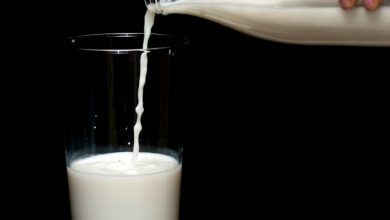
The Inaccuracy of Food Label Calories
It is often assumed that the number of calories that are listed on a food label are relatively close to the actual number of calories that are in the food. This system of measuring calories is presented as detailed scientific facts. However, the nutrition facts on food labels are based on average estimates of fat, protein, and carbohydrates. These estimates are based on research that is now over a century old and often leaves out important details of how the calories in food impact our bodies.
Fats, Protein, and Carbohydrates
All the estimates on how many calories are in foods comes from the work of Wilbur Atwater who rose to fame in the late 1800s and early 1900s. Atwater developed the calorimeter that precisely measures human metabolisms and the energy in various foods. Through his research, he established that fat has on average nine calories for every gram in weight. Protein and carbohydrates have four calories per gram. Despite increases in technology and measurement since Atwater’s first experiments, his estimates for fats, proteins, and carbohydrates are still the foundation of food labeling information.

The Numbers are Way Off
The problem with using the Atwater system for estimates of calories in food is that different foods have wildly different calorie combinations. Studies of food have shown that the number of calories listed for a given food are wrong by about 20 to 30 percent. This means that if a food says it has 100 calories, it could have 70 or 130 calories in realty. The government is aware of this fact and allows foods to be off with calorie information by up to 20 percent.
This inaccuracy of food calories makes it harder for people that are going on diets to count and budget calories needed to lose fat. A diet that is off by 20 percent can cause fat loss to stall if it errors on the high side of averages. It has been known that the more processed a food is, the more accurate the number of calories. Whole foods are extremely difficult to measure. Foods grown and sold in their raw state can swing wildly in number of calories that are actually in them. Differences in soil, water, harvest, and storage all have big impacts on how many calories are in each food.
How Processing Makes More Calories Available
To further complicate the number of calories in a food, how that food is prepared makes a big difference in how many calories are available to the human body during digestion. Cooking food for example, makes more calories in certain foods available. Cooking can be considered a type of processing that allows many foods to become easier to digest.
In a recent paper published by Rachel Carmody, researchers experimented with how our body digests the same food that has been processed differently. The two ancient forms of food processing used were cooking and grinding of foods.
Mice were fed sweet potatoes that had been cooked and sweet potatoes that were uncooked and ground. The researchers also took lean beef that was cooked and beef that was raw and ground. What the researchers wanted to know was how many more calories were mice able to store thanks to more available energy in the food that had been processed. The mice fed cooked foods weighed more than the mice fed uncooked foods. The mice fed cooked foods also weighed more than the mice that were used as a control group and ate a mixed mouse ration.
The amount of processing makes a difference because the calories listed on the label do not indicate how many of those calories and nutrients are actually available to the human body.

The Thermic Effect of Different Foods
The most overlooked part of calories in foods is how hard your body must work to digest the food. It takes calories for food to be broken down and made digestible. Carbohydrates digest very easily, and only require about five percent of the calories in the food for the body to make it useful. Protein on the other hand, takes 25 to 30 percent to break down.
This is important because the thermic effect of food can help people cut calories by eating foods that take time to digest and burn more of their calories. For example, 1,000 calories of carbs will take about 50 calories to digest. But 1,000 calories of ground beef will take about 250 calories to digest. So the 1,000 calories of beef will only account for 750 calories after the thermic effect of digestion. This is rarely discussed in daily calorie balances.
The Battle Ground of Carbs v Fat
As Atwater discovered in the early 1900 hundreds, fat has more calories per gram in weight than either protein or carbs. He made a naïve statement that, if people wanted to lose fat, all they had to do was cut calories. He reasoned that eliminating fat because it had twice the number of calories of carbs or protein would help people trim down.
The problem is that carbs cause insulin to spike, which increases fat storage and makes people hungry again sooner. Fat, on the other hand, does not spike insulin, and it quickly makes people full. A pound of fatty bacon is almost too much for most people to eat. But it’s very easy to eat a pound of mashed potatoes or a bag of corn chips. In addition, Atwater did not know about the thermic effect of foods, and fat takes a lot of energy to digest. Eating fat will actually help decrease overall calories compared to that of carbs.
Atwater’s naïve conclusion in 1900 that people could lose fat by not eating fat is still the foundation of nutrient weight loss science. It was the original beginning of an overall and unhealthy obsession of calories that were listed on food labels. Unfortunately, many of those labels are incorrect or misleading, making it hard for people looking to cut calories to know how many calories they consume daily.



